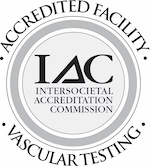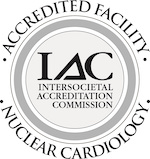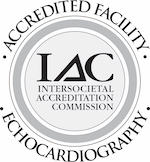Non-Invasive Diagnostic Testing
EKG – tracing electrical activity in the heart. Clinical indications include chest pain, shortness of breath, pre-op evaluation, post-op evaluation or heart attack.
HOLTER MONITOR – 24 or 48 hours of continuous EKG captured on a digital disk while the patient is in normal daily activity. Clinical indications include undocumented arrhythmias, unexplained symptoms such as weakness, dizziness, syncope and palpitations.
EVENT RECORDER – An event recorder is worn to capture heart rhythm while a patient is experiencing symptoms. It is worn continuously for up to 30 days or until abnormal heart rhythm is detected and recorded.
CARDIAC EXERCISE STRESS TEST – an EKG recording performed before, during and after exercise on a treadmill. Clinical indications include chest pain in a patient with a normal EKG, screening tool for patients with normal EKGs, evaluation of fitness in patients post heart attack or post-op.
STRESS-ECHO – A stress test in conjunction with an echocardiogram which is a practical method used to evaluate cardiac function and the diagnosis of coronary artery disease.
Our state-of-the-art CARDIAC PET offers very high diagnostic accuracy and eliminates unnecessary invasive diagnostic procedures.
NUCLEAR STRESS TEST – EKG tracings recorded in conjunction with nuclear images of the heart at rest and again during stress. Clinical indications include chest pain in a patient with an abnormal EKG, noninvasive evaluations of myocardial perfusion. This test is often called a sestimibi or thallium stress test.
ECHOCARDIOGRAM – An echocardiogram or echo test is a noninvasive (the skin is not pierced) procedure used to assess the heart’s function and structures. Echocardiograms come in several forms, but the most common is a transthoracic echocardiogram or TTE – this is an echo performed over the chest. Clinical indications include all cardiac diagnoses (CHF, heart attack, murmur, chest pain, etc.).
CAROTID DOPPLER – imaging of the extracranial carotid arteries using ultrasound. Clinical indications include symptoms of a stroke, syncope, dizziness, carotid bruit, unequal bilateral brachial blood pressures, or pre-op evaluation
ARTERIAL IMAGING – imaging of the arterial system of an extremity using ultrasound. Clinical indications include evaluation of arterial blood flow, especially in patients with arteriosclerosis that prevents compression of the vessels with blood pressure cuffs. This test may also be called an arterial doppler study.
VASCULAR DUPLEX ULTRASOUND – imaging to show how blood flows to many parts of the body. It can also tell the width of a blood vessel and reveal any blockages. It combines traditional ultrasound with Doppler ultrasound. Traditional ultrasound uses sound waves that bounce off blood vessels to create pictures. Doppler ultrasound records sound waves reflecting off moving objects, such as blood, to measure their speed and other aspects of how they flow.
VENOUS IMAGING – imaging of the venous system of an extremity using ultrasound. This may be called a venous doppler study. Clinical indications include suspicion of deep venous thrombosis or evaluation of venous valve competency. Visit our Vein Center
ABI-arterial blood pressures of segments of the extremities are taken along with arterial doppler evaluation at multiple sites along the extremity. This test also may be called a PVR study. Clinical indications include an evaluation of arterial blood flow.







